WD-40 does wonders in a variety of industries and applications. From construction and automotive to home improvement and general maintenance, this product can help get the job done right.
But it can leave a residue when applied to metals, so how do you get it off? Let's take a look below.
To get WD-40 residue off of metal, try the following solutions:
- Water and Dawn Dish Soap
- Degreaser
- Mineral Spirits
- Acetone
As you can see, you have some options to remove WD-40 residue from metal. This article will discuss each of these solutions to help you decide what to use. In addition, we will answer other frequently asked questions about WD-40, so read on!
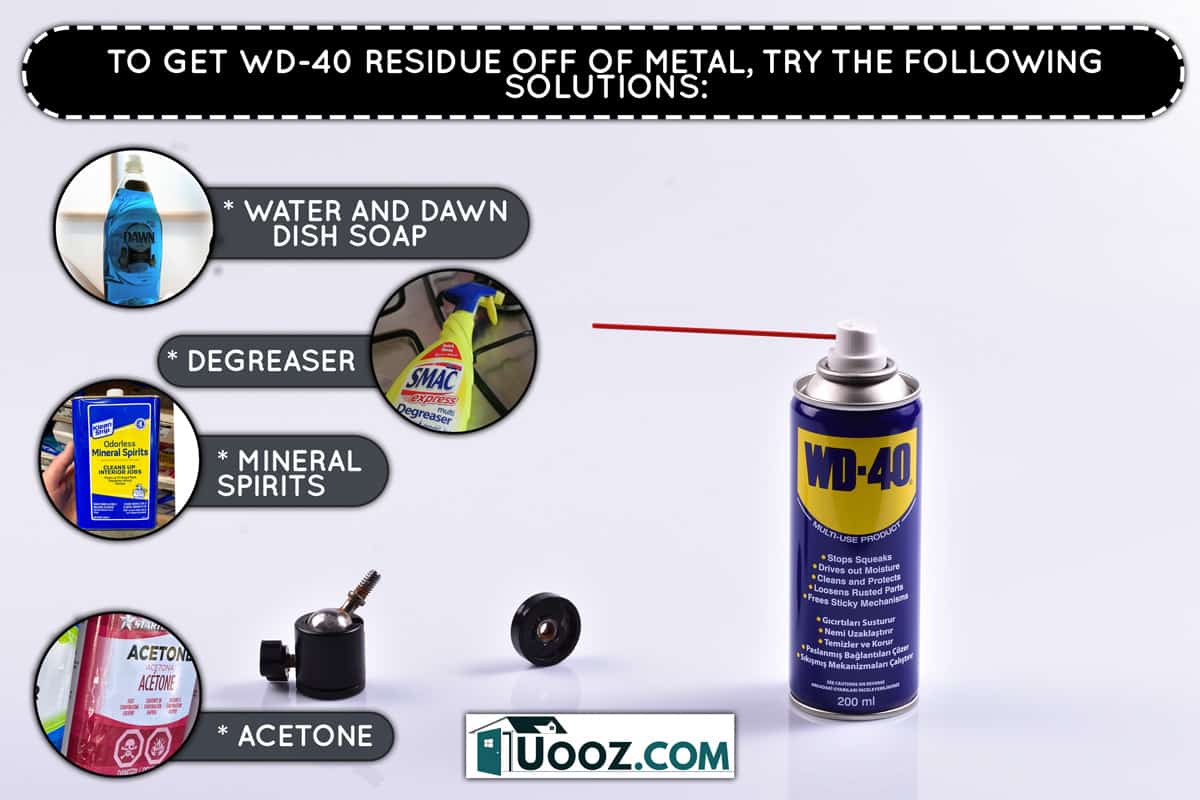
What Removes WD-40 Residue From Metal?
WD-40 is a universal product used for various tasks, such as lubricating metal surfaces, protecting against rust, and cleaning grease. However, it can leave a residue when applied to metals.
Typically, you will want to remove the WD-40 residue before painting or applying a new coat of wax, as it can act as a barrier between the metal and the new finish. Luckily, several products can remove WD-40 residue from metal surfaces.
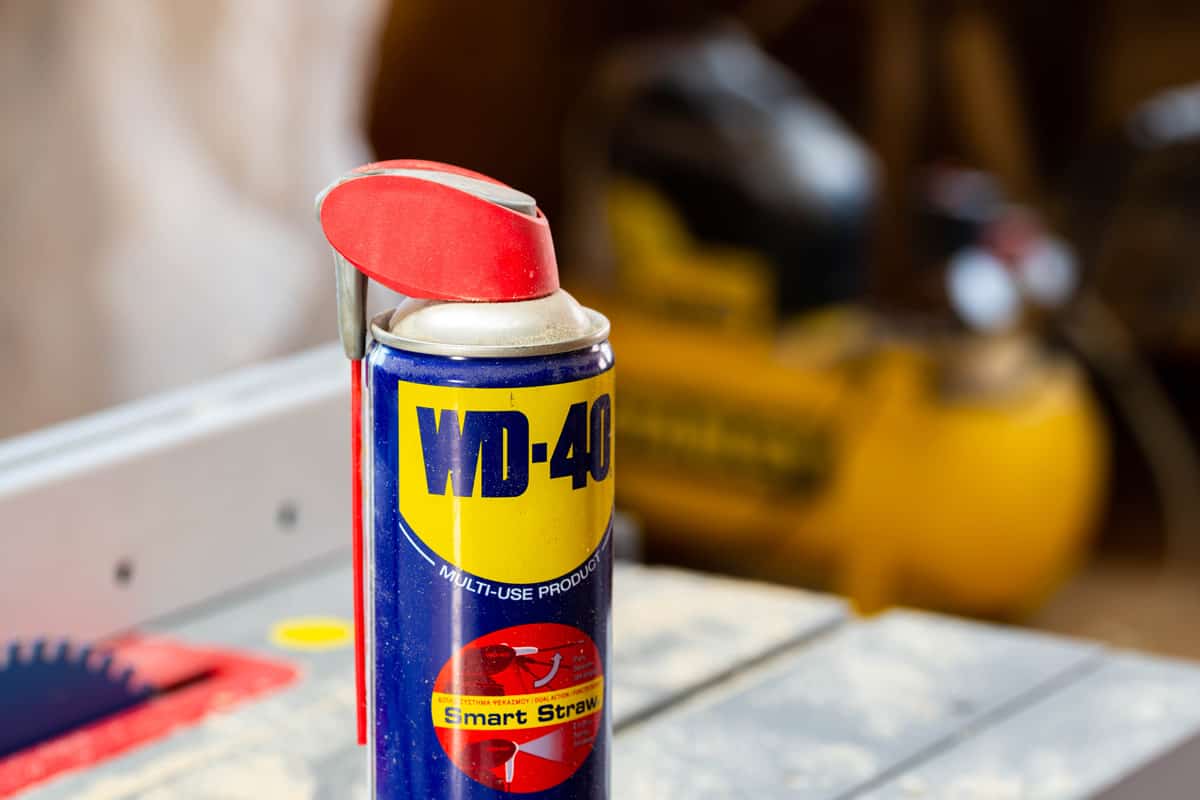
Water and Dawn Dish Soap
Like WD-40, Dawn dish soap is a versatile product used to clean, degrease, and even remove stains. When mixed with water, Dawn dish soap makes an effective solution for removing WD-40 residue from metal surfaces.
To use this method, simply mix equal parts water and Dawn dish soap in a bowl or bucket. Dip a clean cloth or sponge into the solution and use it to scrub the WD-40 residue from the metal surface.
Once the residue has been removed, rinse the area with clean water and dry it with a soft cloth.
Degreaser
Using a degreaser meant for heavy-duty cleaning, you can quickly and easily remove WD-40 residue from metal surfaces.
This type of product is typically used to clean engines and other machinery, so it should be able to handle WD-40 residue with ease.
To use a degreaser, apply it to the WD-40 residue and let it sit for a few minutes. After it has had a chance to penetrate the residue, use a brush or cloth to scrub it away.
Once the residue has been removed, rinse the area with clean water and dry it with a soft cloth.
Mineral Spirits
Mineral spirits are a type of petroleum distillate that can be used as a solvent or cleaner. It is typically used to clean paintbrushes and thin oil-based paints but can also effectively remove WD-40 residue from metal surfaces.
To use mineral spirits, apply them to a clean cloth or brush and use them to scrub the WD-40 residue from the metal surface. Once the residue has been removed, rinse the area with clean water and dry it with a soft cloth.
It's a good idea to wear gloves and a respirator when using mineral spirits, as they can be harmful to your skin and lungs.
Acetone
Acetone is a type of solvent that can remove WD-40 residue from metal surfaces. It is typically used as a nail polish remover but can also effectively remove other types of residues.
It is more aggressive than other solvents, so it is essential to use it cautiously. To use acetone, apply it to a clean cloth or brush and use it to scrub the WD-40 residue from the metal surface. Rinse with water like any other solvent.
It's important to note that you should wear gloves when using acetone, as it can be harsh on your skin.
How Long Does WD-40 Stay On Metal?
WD-40 is a long-lasting formula that can stay on metal surfaces for extended periods. You can expect WD-40 to stay on metal for one year when outdoors.
However, for indoor use, WD-40 can last up to two years without needing to be reapplied.
For example, if you are trying to avoid rust from forming on an indoor or outdoor metal surface, WD-40 can help. Applying WD-40 to the metal surface and allowing it to dry can create a barrier that will prevent rust from forming.
You should continue to reapply WD-40 as needed to maintain the barrier and prevent rust from forming.
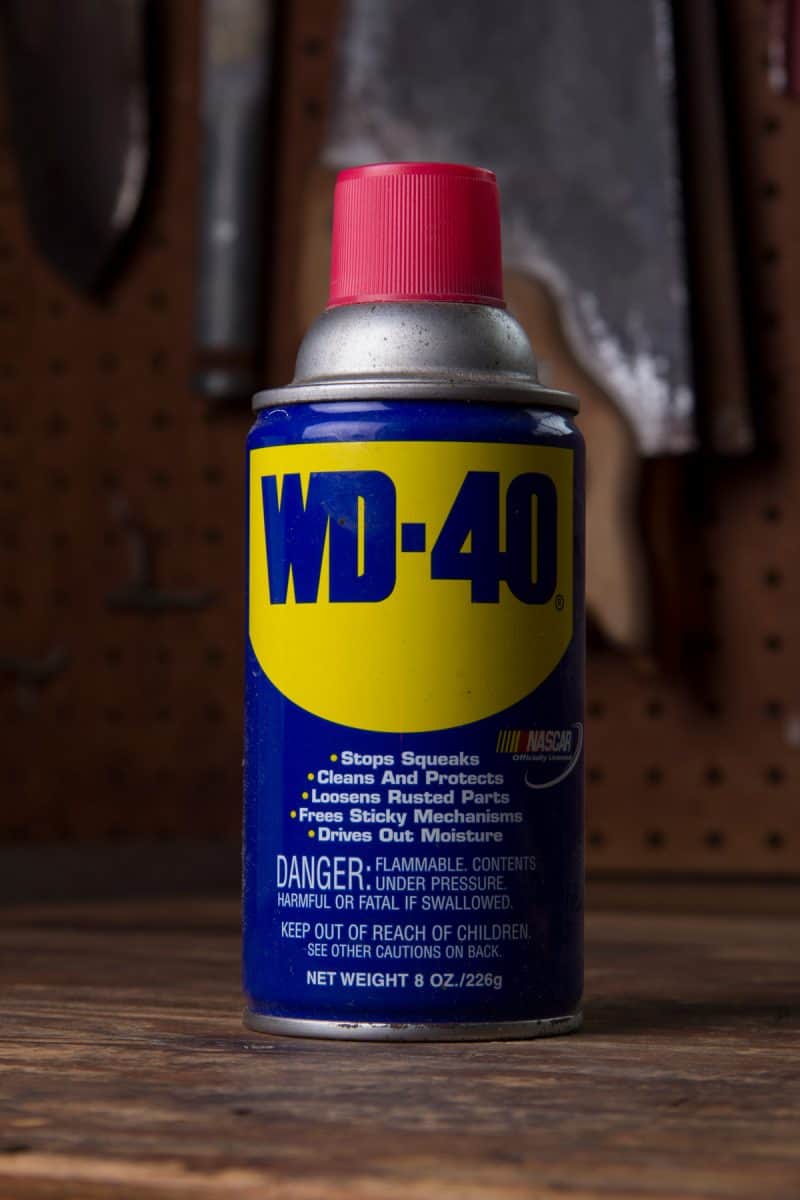
How Long Should You Wait After Spraying WD-40?
If you spray WD-40 onto a metal surface to lubricate it or prevent rust, you should allow it to dry for at least 15 minutes before using the metal surface.
For example, if you are trying to remove a pesky screw that won't budge, you should spray WD-40 onto the screw and wait 15 minutes before trying to remove it. This will give the WD-40 time to work its magic and loosen the screw.
Of course, you can reapply WD-40 as needed.
What Was WD-40 Originally Used For?
Almost anyone who owns a home or mechanical equipment knows about WD-40 and its many uses.
But did you know that WD-40 was initially used to prevent rust and corrosion on the Atlas rocket?
That's right, WD-40 was created in 1953 by three San Diego Rocket Chemical Company scientists who were trying to find a way to prevent rust and corrosion on the Atlas rocket.
They eventually devised a formula that worked, and WD-40 was born. Since then, the uses for WD-40 have expanded far beyond its original purpose, and it is now used by people worldwide for various tasks.
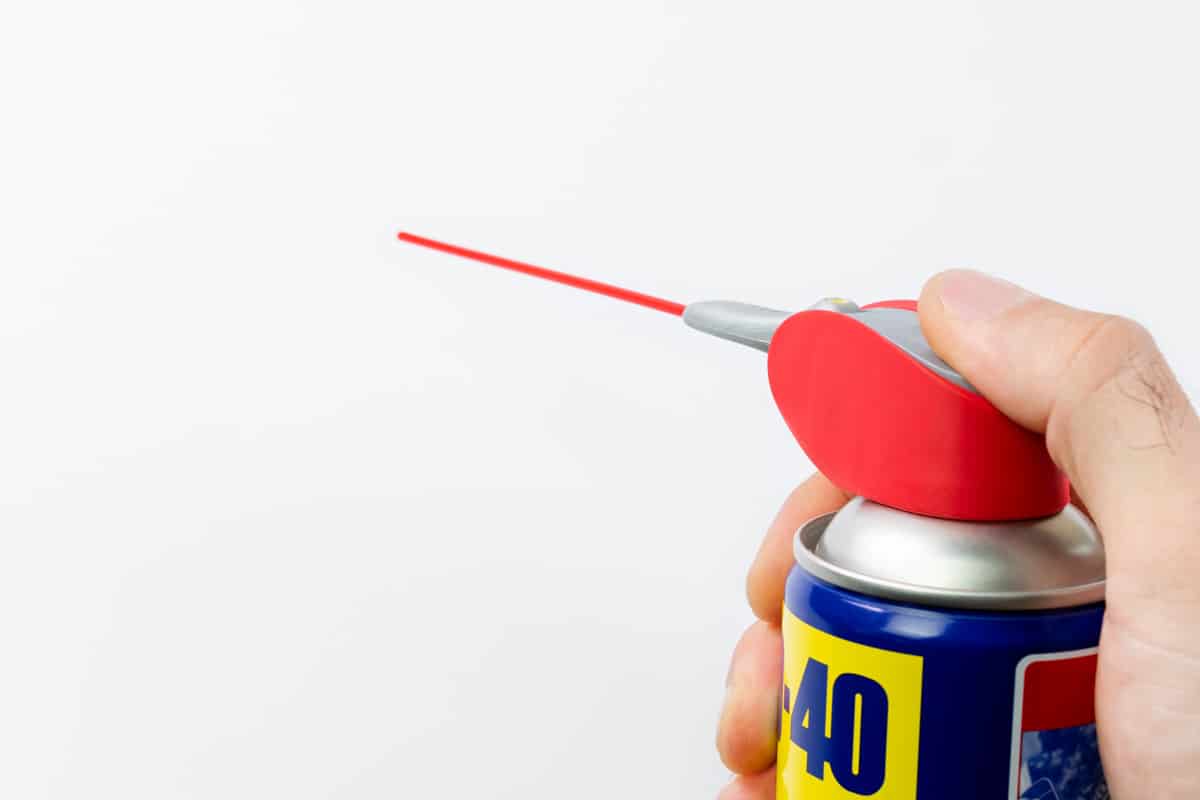
Can You Use Water To Wash Off WD-40?
We know we gave different solutions to remove WD-40 from metal surfaces, but you may be wondering why you can't just use water.
The reason being is that WD-40 is made of petroleum. As a result, it is more of an oil, and water will float on top of it.
So if you try to use water to wash off WD-40, the WD-40 will just sit on top of the water and won't actually get removed. That's why it's important to use a solvent that can penetrate and remove the WD-40.
In addition, solvent and elbow grease are more effective at removing WD-40 than just water pressure from a hose.
Can You Put WD-40 In Your Gas Tank?
No, you should not put WD-40 in your gas tank. While some may think it will clean your engine or prevent rust, it will do more harm than good.
WD-40 is made of petroleum, and when you put it in your gas tank, it will mix with the gasoline and cause your engine to run less efficiently.
You are better off using a product meant to clean your engine, such as seafoam, rather than WD-40.
Can WD-40 Remove Rust From Metal?
Not only can WD-40 prevent rust, but it can also remove rust from metal surfaces.
To remove rust from metal, apply WD-40 to the affected area and let it sit for a few minutes. Then, use a brush or cloth to scrub the rust away.
You may need to apply WD-40 a few times and scrub with some elbow grease to eliminate all the rust, but eventually, it should come off.
Remember that you may need to use a different method or product if you are dealing with severe rust. For example, severe rust spots need to be cut away or sanded down before you can treat them with WD-40.
However, after you sand or cut away the rust, you can then apply WD-40 to help prevent rust from returning.
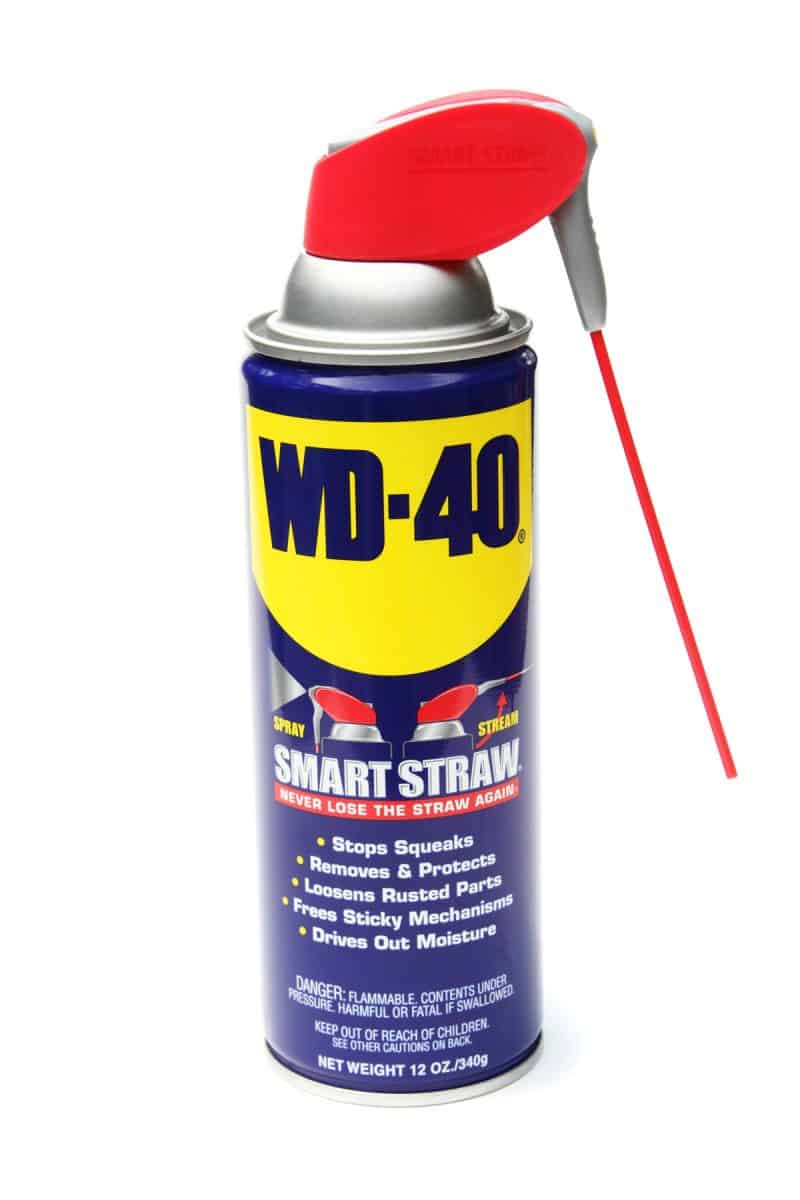
Can I Get WD-40 On My Skin?
When using WD-40, it is essential to be careful so that you don't get it on your skin.
WD-40 is made of petroleum, and if you get it on your skin, it can cause irritation. In addition, if you have cuts or open wounds on your skin, the WD-40 can cause an infection.
So, it is best to avoid contact with your skin. If you get WD-40 on your skin, wash it off as soon as possible.
If you have any cuts or open wounds on your skin, cover them with a bandage before using WD-40.
To avoid this, wear gloves when using WD-40, and be careful not to get it on your skin.
Final Thoughts
Overall, WD-40 is a versatile product used for various tasks, from preventing rust to removing rust. Remember, if you need to remove WD-40 residue, water alone won't do the trick—you'll need a solvent.
Made it to the end? Here are other articles you might find helpful:
Should You Lubricate Garage Door Springs?
